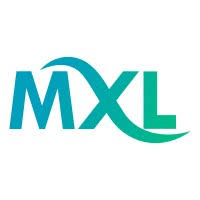
Robinjasper1109
Uploaded on Aug 11, 2025
In a world where change is the only constant, the ability to train and upskill a workforce with speed and precision is no longer a luxury—it's a fundamental necessity. Traditional training methods, with their cumbersome, time-intensive formats, often fail to deliver the agile, on-demand learning required by modern businesses. This has paved the way for microlearning, a dynamic methodology that promises a more efficient and engaging approach to employee development. However, to truly unlock the power of microlearning, an organization needs more than just bite-sized content; it requires a strategic, six-step roadmap that transforms simple snippets into a potent force for performance improvement and business growth. Step 1: Start with a Single, Measurable Goal The foundation of any successful microlearning initiative is an unwavering focus on a specific, measurable business objective. Vague learning goals lead to ineffective training. Your strategy should begin by pinpointing a single, critical performance gap that microlearning can solve. Action: Don't start with a broad topic like "regulatory compliance." Instead, identify a specific business problem, such as "reduce errors in processing new client applications by 15%." For a professional in the Finance sector, the goal might be to "increase the adoption rate of a new digital tool by 20% in the first month." This laser-focus ensures that every piece of content you create has a direct and provable impact on the bottom line. Step 2: Atomize Content for Maximum Retention Once your goal is defined, the next step is to break down the required knowledge into its smallest, most atomic components. This is the essence of microlearning. By deconstructing complex topics into single-objective snippets, you significantly improve knowledge retention and make the content easier to apply. Action: Take a complex process and simplify it. For a Retail associate learning a new point-of-sale system, instead of a 30-minute video, create a series of two-minute snippets: "How to process a return," "How to apply a discount code," and "How to issue a gift card." For a healthcare professional in a Health care facility, a topic like "patient intake" can be atomized into a series of Microlearning Courses, each focused on a single task, such as "verifying a patient's insurance card." Step 3: Design for Engagement and Action Brevity alone doesn't guarantee impact. The content must be engaging and relevant to the learner's daily tasks. To achieve this, you need to leverage a variety of formats and interactive elements. Action: Go beyond simple text with short, high-quality videos, interactive quizzes, dynamic infographics, and brief simulations. An AI-powered Authoring Tool can significantly accelerate this process by converting dense source material into visually appealing, interactive modules. For the Pharma industry, an AI tool could take a new drug's technical manual and create a series of concise, interactive quizzes for the sales team, ensuring they are well-versed in its features and benefits. The right microlearning authoring tools are essential for this step. Step 4: Deploy on an Agile, Mobile-First Platform The best content loses its power if it's not accessible. To truly unlock the power of microlearning, training must be available to employees exactly when and where they need it. Action: Deploy your content on a mobile-first Microlearning Platform. This platform should be complemented by a user-friendly Microlearning Application that provides "just-in-time" learning. For a worker in the Mining industry, a mobile app can provide a quick video on a safety protocol right at the worksite. For a technician in the Oil and Gas industry, this on-demand access means troubleshooting information is always a few taps away, minimizing downtime and boosting productivity. Step 5: Personalize the Learning Journey with AI A one-size-fits-all training approach is a thing of the past. To truly unlock microlearning's potential, you must personalize the learning journey for each employee. Action: Implement an AI-Powered Learning Platform that can analyze a learner's performance data, identify skill gaps, and job role to dynamically recommend the most relevant microlearning courses. This ensures that training is highly efficient and targeted. The AI can also automate spaced repetition—delivering short refreshers or quizzes on key concepts at optimal intervals to combat the "forgetting curve," a crucial feature of effective microlearning platforms. Step 6: Measure and Refine with a Powerful LMS The final and most critical step is to prove the value of your training by measuring its impact on key business metrics. Action: A robust Microlearning LMS is designed to handle this complexity. It provides the deep analytics needed to track not just completion rates but also the direct correlation between training and performance outcomes. For an Insurance company, this means being able to link the completion of a micro-module on new policy features with an increase in sales conversions. By using a sophisticated Microlearning LMS and the full suite of microlearning tools, you can confidently demonstrate how your training is driving tangible results, solidifying your microlearning strategy as a strategic asset for your business.

Comments